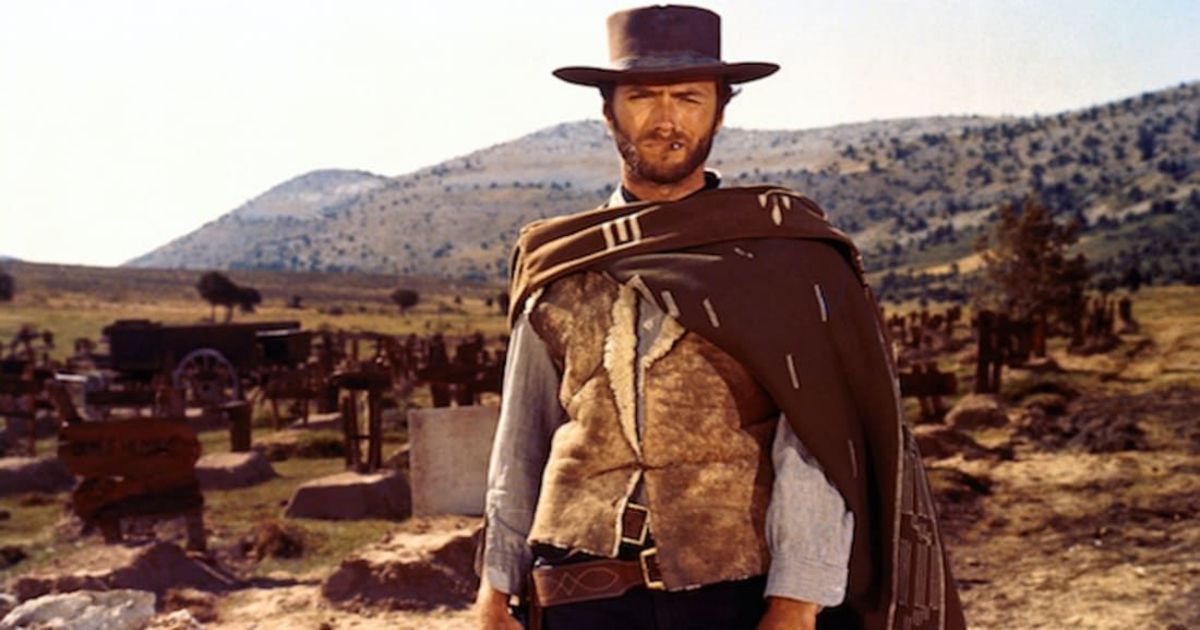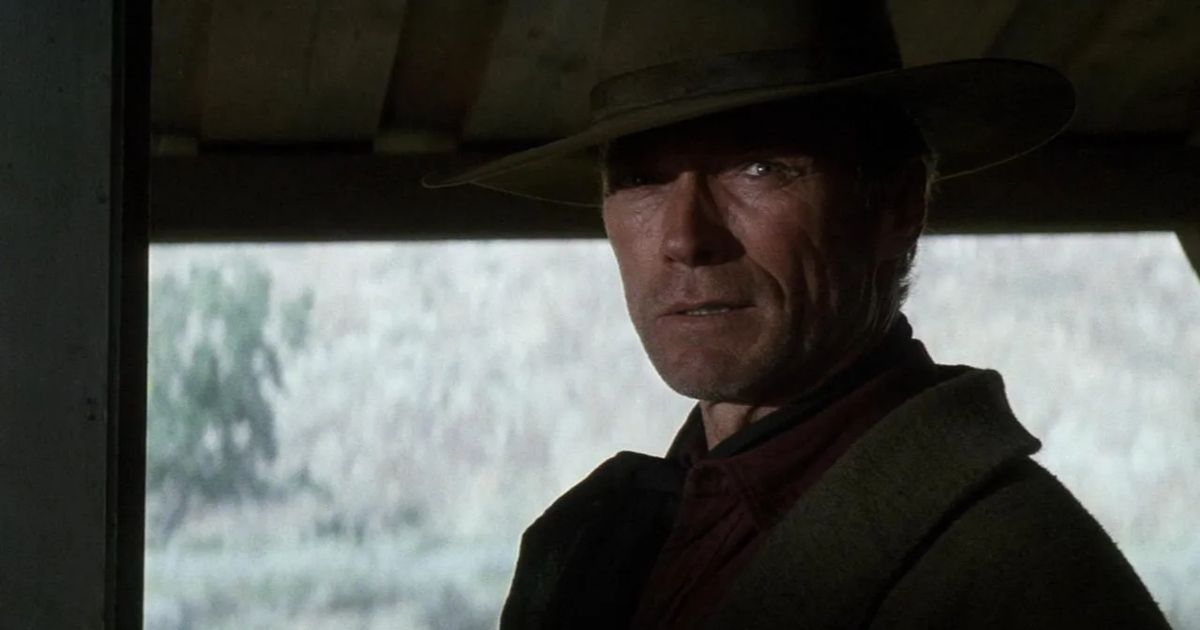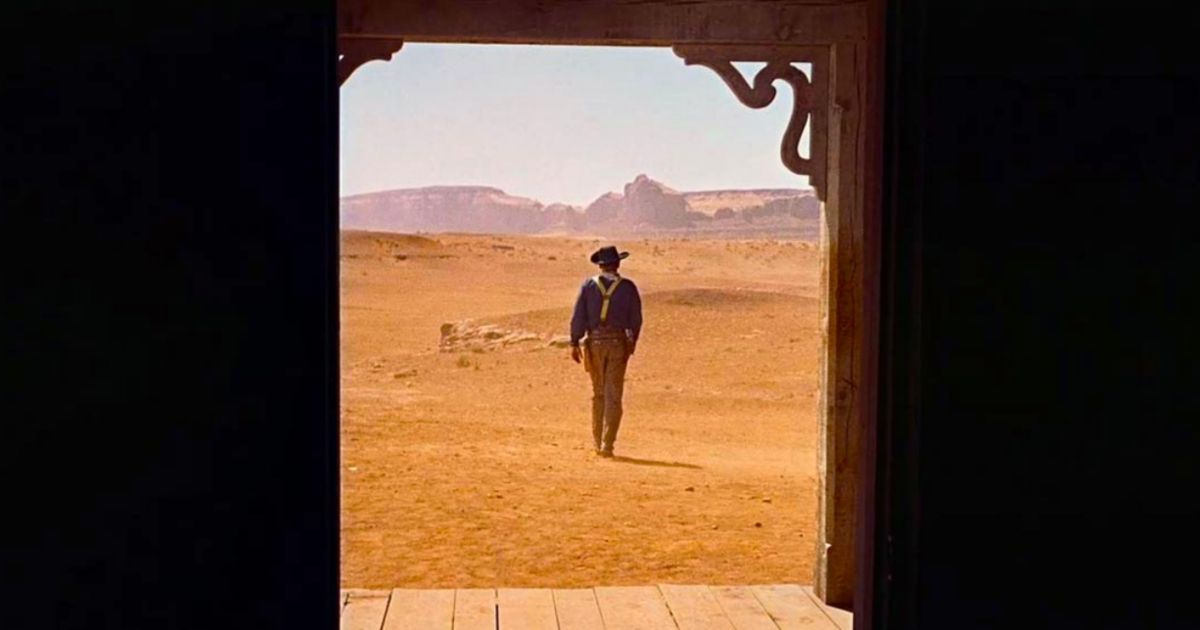The Western film: it’s something vaguely inspired by the American West, even if the story sometimes relies on stereotypes, historical inaccuracies and legends, or if the language isn’t the lingua franca of the Wild West. These kinds of movies tend to embody the concept of Manifest Destiny: the protagonist is often living within a society with a strict moral code and relies on the concepts of revenge, pursuit, and retribution in order to propel the plot forward.
The first Western movie to lay down the foundations of the genre was the silent film The Great Train Robbery (1903); however, it’s arguable that even earlier, in 1878, the first Western cinema began to appear on the scene (with one of the first motion pictures, Horse in Motion, or Sallie Gardner at a Gallop).
Updated March 25th, 2023: If you’re a fan of Western movies, you’ll be happy to know we’ve updated this article for accuracy, consistency, and more inclusion of recent projects in the celebrated genre.
When one imagines a Western movie, several images come to mind: Clint Eastwood or John Wayne, the lone cowboy on the frontier, outlaws, saloons in the outposts of a rural town, horses in dust, and so on. However, it is also important to note that Western films have done their part to recreate, mythologize, and romanticize a period of American history, coding it in language and imagery that may not be factually correct, and may even be offensive in terms of representation and themes. Without the core group of films that made the genre what is known for today, history as many remember it would’ve looked a little different.
There are obviously many masterpieces that just barely don’t make the cut due to limited space — Jimmy Stewart’s Westerns with Anthony Mann, Tombstone, The Three Burials of Melquiades Estrada, El Topo, Red River, Cat Ballou, Rancho Notorious, The Gunfighter, The Big Sky, The Proposition, Meek’s Cutoff, The Nightingale, Rio Bravo, McCabe and Mrs. Miller, and Sam Peckinpah Westerns like The Wild Bunch, Pat Garrett and Billy the Kid, Ride the High Country, and Bring Me the Head of Alfredo Garcia, which makes up an entirely separate list). That being said, here are some of the best Western films of all time.
20 3:10 To Yuma
While there is undoubtedly some debate to be had, the 1957 and the 2007 remake of 3:10 to Yuma are arguably equally gripping. Glenn Ford and Russell Crowe play Ben Wade in the respective editions, and Van Heflin and Christian Bale present Dan Evans. Lowly rancher, Dan agrees to hold wanted outlaw, Ben as he awaits his fate at court in Yuma. A film about willpower, and a battle of wit as Ben attempts to psychologically prey on the vulnerable Dan.
19 The Outlaw Josey Wales
Inspired in both name and narrative by author Asa Earl Carter’s fiction work, Clint Eastwood’s screen adaptation, The Outlaw Josey Wales is a Civil War era chronicle about a Missouri farmer, Josey Wales (Clint Eastwood). Wales’ existence is occupied by his farming work and family, that is until a group of unionists murders his wife and son in cold blood. In an ultimate illustration of retribution, Wales embarks on a journey of revenge, joining up with a group of confederates as he tracks down the culprits.
18 A Fistful of Dollars
The first installment of Sergio Leone’s acclaimed Dollars trilogy had the Japanese pioneer Akira Kurosawa to thank for his phenomenal samurai movie, Yojimbo, which formed the basis of A Fistful of Dollars. The film signified the birth of the man with no name, with Clint Eastwood taking on the role of the squinty, laconic lone Wolf in all three films.
The Western classic explores the story of the man shrouded in deep mystery as he trots in on horseback to the New Mexico town of San Miguel. Risking being caught in the crossfire of its two warring factions, the lonesome man methodically plays the two off against one another.
17 For a Few Dollars More
With A Fistful of Dollars becoming a critical and commercial triumph, the man with no name returned to the silver screen just a year later, this time under the For a Few Dollars More umbrella. The picture details the man with no name trailing notorious criminal, El Indio (Gian Maria Volonté), as he joins forces with a fellow bounty hunter, Colonel Douglas (Lee Van Cleef). They agree to divide the bounty between them upon capture. Leone outdoes his previous outing, with development in both a filmmaking and narration capacity.
16 No Country for Old Men
No Country for Old Men was the point that the Coen brothers realized they had a penchant for making Westerns, with True Grit and The Ballad of Buster Scruggs following thereafter. The neo-western comprises conventional elements of the historic genre with several unmistakable characteristics only associated with their filmmaking techniques, making the film such a distinctive and compelling watch.
The fusion of styles works exceptionally, traversing the saga of Llewelyn Moss (Josh Brolin), a hunter who finds a briefcase containing millions of dollars after a drug deal gone-wrong. Hot in pursuit of the novice is one of the most memorable Western characters, the seasoned, cold-blooded killer, Anton Chigurh (Javier Bardem) who stops at nothing to acquire what he wants.
15 The Magnificent Seven (1960)
The Magnificent Seven follows a bandit who terrorizes a small Mexican farming village each year. Several of the village elders send three of the farmers into the U.S. to search for gunmen to defend them. They end up with seven (hence the title) each of whom comes for a different reason. This landmark Western from director John Sturges is actually a remake — in an Old West style — of Akira Kurosawa’s 1954 Japanese film Seven Samurai.
This 1960 version was then remade itself into a 2016 film directed by Antoine Fuqua and starring Denzel Washington. The original, however, was both a critical and commercial success and also spawned three sequels, a TV series. In 2013, the film was selected for the United States National Film Registry by the Library of Congress as being “culturally, historically, or aesthetically significant.”
14 The Assassination of Jesse James by the Coward Robert Ford (2007)
Taking place in Missouri in the early 1880s, The Assassination of Jesse James by the Coward Robert Ford dramatizes the last seven months in the life of famed outlaw Jesse James (Brad Pitt), beginning with the Blue Cut train robbery of 1881 and culminating in his assassination at the hands of Robert Ford (Casey Affleck) the following April. In the time between these two fateful events, the young and jealous Ford befriends the increasingly mistrustful outlaw, even as he plots his demise.
Adapted from Ron Hansen’s 1983 novel of the same title, this 2007 revisionist Western film was written and directed by Andrew Dominik. To achieve the visual style he wanted for the movie, Dominik reportedly took influences from many sources, including still photographers, images clipped from magazines, stills from Days of Heaven, and even Polaroids. Although a box-office bomb, the film received positive reviews from the critics, with Pitt and Affleck’s performances receiving widespread acclaim. It has since gained a large fan following, with many organizing re-releases of the film under the “Jesse James Revival” banner.
13 The Power of the Dog (2021)
The Power of the Dog is obviously a controversial choice, but it’s an important film that’s arguably the zenith of a new era of Western cinema. It stars Benedict Cumberbatch, Kirsten Dunst, and Jesse Plemons, an all-star and very modern cast unexpected in a Western. Cumberbatch and Plemons portray two brothers; one who had just gotten married and brought his wife home. The other brother, envious of this new development, begins to treat them cruelly as the film plunges into dark psychosexual games. The Power of the Dog was nominated for numerous honors at the 2022 award shows, including Best Picture at the Academy Awards., winning a Best Director Oscar for the great Jane Campion.
The Power of the Dog continues (and masters) the interesting trend of what may be called ‘post-Westerns,’ alongside The Harder They Fall and Old Henry. These films are utilizing the grand imagery of the traditional Western but subverting their more conservative ideologies with a very contemporary kind of deconstruction. The Power of the Dog exposes the homoeroticism, cruelty, misogyny, loneliness, and class struggle buried beneath the dust of many classic Westerns, and as a result remains a provocative text that will likely be influential for decades. Many people love the film, while many others absolutely hate and continue to blast it and Campion; either way, it’s certain to elicit a visceral response, and how a viewer approaches it may say more about them than the film itself.
12 Shane (1953)
There’s hardly been as bland a script directed and filmed with such brilliance as Shane. The film shouldn’t work — it’s filled with tropes that were already tired by 1953 (the stranger/drifter who comes to town just wanting to outrun his past but is forced to confront inevitable violence) and had a highly problematic production (lead star Alan Ladd, playing a master gunslinger at five-foot-six, hated guns and was terrible at handling them, to the extent that one shooting scene had to be filmed 116 times; Jack Palance, who should be the intimidating villain on horseback, was terrified of horses at the time, with the single successful dismount Palance achieved being used multiple times throughout the film).
However, George Stevens and cinematographer Loyal Griggs manage to film this traditionally dull ‘good vs. evil’ story with such utter mastery that Shane is immediately entrancing. The way dirt, faces, animals, and vistas are filmed is breathtaking, and its pioneering use of a new widescreen system captures landscapes with a stunningly epic sensibility while allowing Stevens’ excellent close-ups to be hypnotically expressive. Every frame of Shane is a compositional masterpiece, with the film’s visuals going on to define the typical, mythical image of the American Western for decades to come.
11 The Man Who Shot Liberty Valance (1962)
John Ford, a renowned director of Western films, returned in 1962 with The Man Who Shot Liberty Valance. The cast included the likes of John Wayne, James Stewart, and Vera Miles, while the crew included prestigious costume designer Edith Head. The Man Who Shot Liberty Valence is unique because it was shot in black and white when 1960s movies were shifting towards using color; the decision is one of many aesthetic choices which adds to Ford’s theme of the death of the Western and ‘The West’ as an idea, with the film focusing on the demise of American myths, honor, and heroism. The plot focuses on a Senator, Ranse Stoddard, returning to the front for a friend’s funeral. The story then pivots to his past as a young attorney fighting a local gang for justice.
10 My Darling Clementine (1946)
“My Darling Clementine, apex of Ford’s art,” a burglar says in Steve Erickson’s novel Zeroville, watching the John Ford masterpiece on television. “Some people think it’s The Searchers, which is no doubt one wicked badass movie whenever my man the Duke is on the screen.” Whichever Ford film one prefers, it’s clear that My Darling Clementine stands out from the vast majority of Western movies by focusing prominently on a strong woman and the emotional relationship between her and Wyatt Earp (played by Henry Fonda at his best).
Brilliantly directed and crafted piece of art that beautifully idealizes the American myth, My Darling Clementine is a film for filmmakers, and was lauded as the greatest Western by a variety of directors including Sam Peckinpah and Michael Mann, who calls it “possibly the finest drama in the Western genre,” one that “achieves near-perfection.” As Matt Bailey writes for Not Coming to a Theater Near You, “If there is one film that deserves every word of praise ever uttered or written about it, it is John Ford’s My Darling Clementine. Perhaps the greatest film in a career full of great films, arguably the finest achievement in a rich and magnificent genre, and undoubtedly the best version of one of America’s most enduring myths, the film is an undeniable and genuine classic.”
9 Once Upon a Time in the West (1968)
One of Sergio Leone’s famed Spaghetti Westerns, Once Upon a Time in the West was his follow-up to the Dollars Trilogy. Leone had declared he finished making Western movies permanently, but this was the movie that drew him back from his self-induced Western retirement after two years. Instead of having Clint Eastwood in the main role (he turned it down), Henry Fonda portrays the protagonist. The story revolves around two different conflicts in a town in the Old West: a fight over the only water source and building railroads and a classic vengeance story. Originally considered to be mediocre, the film is now a cult classic, an epic drama that beautifully portrays the politics, patriarchy, and power plays of 19th century America.
8 Butch Cassidy and the Sundance Kid (1969)
Butch Cassidy and the Sundance Kid is considered to be one of the greatest films of all time. The movie is based on the real-life outlaws Butch Cassidy and Sundance Kid, played by Paul Newman and Robert Redford respectively. Butch Cassidy is the leader of a gang in the Wild West, and after he and Sundance Kid return from a trip, they discover the gang has selected a new leader. This spurs a grand tale of heists, violence, and fleeing one life for another. It was the top most-grossing film in 1969 and went on to be dubbed one of the top Western films released of all time.
Butch Cassidy and the Sundance Kid is a landmark film outside the genre, with Oscar-winning screenwriters such as Aaron Sorkin praising it as “a lesson in everything.” William Goldman’s screenplay is often hailed as one of the best ever written. Both the script and film itself still serve as inspirations for budding writers and directors today.
7 Stagecoach (1939)
When John Ford came out with Stagecoach, Western movies were not considered very profitable by movie studios. It was a struggle to find a producer and studio for the film because of this reason. It was also a struggle because the main two stars of the movie were Claire Trevor and John Wayne — there were doubts about whether Wayne was a leading man, but this would become his breakout role.
It takes place aboard a stagecoach that’s traveling through Apache territory; a group of strangers boards this stagecoach and has to deal with external and internal threats to their safety. Ford displays his utter mastery of the frame in the film, which holds the bragging rights of having a 100% on Rotten Tomatoes, although its depiction of Indigenous Americans is derogatory and, by modern standards, problematic. The film illustrates one of the key issues of Western cinema — a dishonest and xenophobic depiction of American excellence which has since been historically disputed; nonetheless, Stagecoach and other classic but problematic Westerns remain important documents of how America viewed itself.
6 High Noon (1952)
The early 1950s in the United States, especially in Hollywood, was full of fear. The Red Scare, or McCarthyism, was in full swing and many screenwriters, directors, and actors were targeted and trialed as Communists. High Noon, which came out in 1952, made a bold political statement after screenwriter Carl Foreman was accused of being a Communist and was blacklisted. He then outlined the script to be blatant commentary about the blacklisting, with the great Gary Cooper starring as a local Marshall who must face down murderous criminals on his own when nobody is brave enough to speak up or help him. Although High Noon isn’t a typical Western, it was well-loved by several U.S. Presidents and was one of the first films selected to be preserved by the National Film Registry.
5 True Grit (1969 and 2010)
True Grit was one of the very last traditional Hollywood Westerns when it came out in 1969, and the great performance from John Wayne (who won is one and only Oscar here) perfectly reflects the aging, out-of-style aesthetic of the Western at a time when Woodstock, Vietnam, and psychedelia were dominating pop culture. It’s a melancholic, beautiful film which received one of the most surprisingly excellent remakes of all time.
Ethan and Joel Coen — otherwise known in Hollywood as the “Coen brothers” — are the masterminds behind this acclaimed remake of John Wayne’s 1969 classic. The 2010 film stars Josh Brolin, Matt Damon, Jeff Bridges, and Hailee Steinfeld in her first major film role. Steinfeld plays a 14-year-old character whose father is murdered, setting her off on a path for vengeance against the murderer (Brolin). She then teams up with Deputy Marshall (Bridges) and Texas Ranger (Damon) in order to get her revenge. True Grit is a contemporary Western with a lot of soul and devotion in its characters, giving it a chance to draw in larger and new audiences to a genre many may have previously thought to be outdated. The Coen brothers’ True Grit was a more successful effort, however, and can’t be missed for Western diehards and beyond; it’s arguably responsible for the recent new boom in Western cinema.
4 Johnny Guitar (1954)
One of the coolest, campiest, and most original films of all time, Johnny Guitar is a truly iconoclastic masterpiece from the renegade genius Nicolas Ray. The film follows the titular character (an utterly romantic Sterling Hayden) as he enters a saloon on the outskirts of a cattle town and reunites with an old flame, Vienna, the saloonkeeper and ostensible gang leader who is one of the toughest, most independent women ever committed to screen (and played to perfection by Joan Crawford in a role which queered the mainstream and remains beloved in the LGBTQ+ community). You can see Martin Scorsese’s reverent introduction to the film below.
The film was an utter critical failure at the time (The New York Times called it a fiasco, while the New York Herald Tribune speculated “feminism has gone too far”), but French critics adored it and insisted on screening it frequently in cinemas; eventually, the movie has been reevaluated as one of the greatest ever made. Johnny Guitar is a Technicolor, impassioned, hyper-stylized Western with some of the greatest dialogue of all time. It’s simply a film that exists in its own weird, wild world.
3 The Good, the Bad and the Ugly (1966)
The Good, the Bad and the Ugly is hailed as the best of Sergio Leone’s Dollars Trilogy, and that’s for a good reason. After having two previous movies in the trilogy, it’s built the fanbase up and is a glorious finale to the trilogy. The Man With No Name (Clint Eastwood), now known as Blondie, is pitted against two new adversaries for one last tension-filled duel.
The movie has Leone’s classic style of filming, standout performances from the actors, and a story that keeps audiences at the edge of their seats and wanting more. Ennio Morricone’s score is one of the most memorable of all time, and the epic vistas and visual storytelling of the film has been influential ever since.
2 Unforgiven (1992)
Unforgiven was said to be Clint Eastwood’s last Western before hanging up his cowboy hat for good (and was for three decades, until 2021’s Cry Macho), and he gave it his all for this movie. He put on one of his best performances, leading to a Best Picture win at the Academy Awards and Best Director for Eastwood. In the film, Eastwood portrays an aging man who returns to his job as a killer after years of being a farmer. Unforgiven is a Revisionist Western and revisits the concept of the Wild West and its stereotypical portrayals, interrogating the mythology created by the genre.
1 The Searchers (1956)
The Searchers is John Ford’s epic Western, one which most cinephiles consider to be his best, and it truly does live up to the hype. The movie was released in 1956 and stars John Wayne as a Civil War veteran searching for his abducted niece (Natalie Wood) and her sister. It is unmistakably a John Ford Western that is grand in its scope: its main characters are nuanced, their motivations and trajectories compelling enough to make the viewer interested.
Although the film holds more sinister undertones due to its justification for the murder and treatment of Indigenous Americans, it’s considered one of the best films ever made. Stylistically and story-wise, the film is a solid watch outside this depiction. The influence of this movie is still alive in the filmmakers active today; directors like Martin Scorsese, George Lucas, and Steven Spielberg have all cited it as an influence.

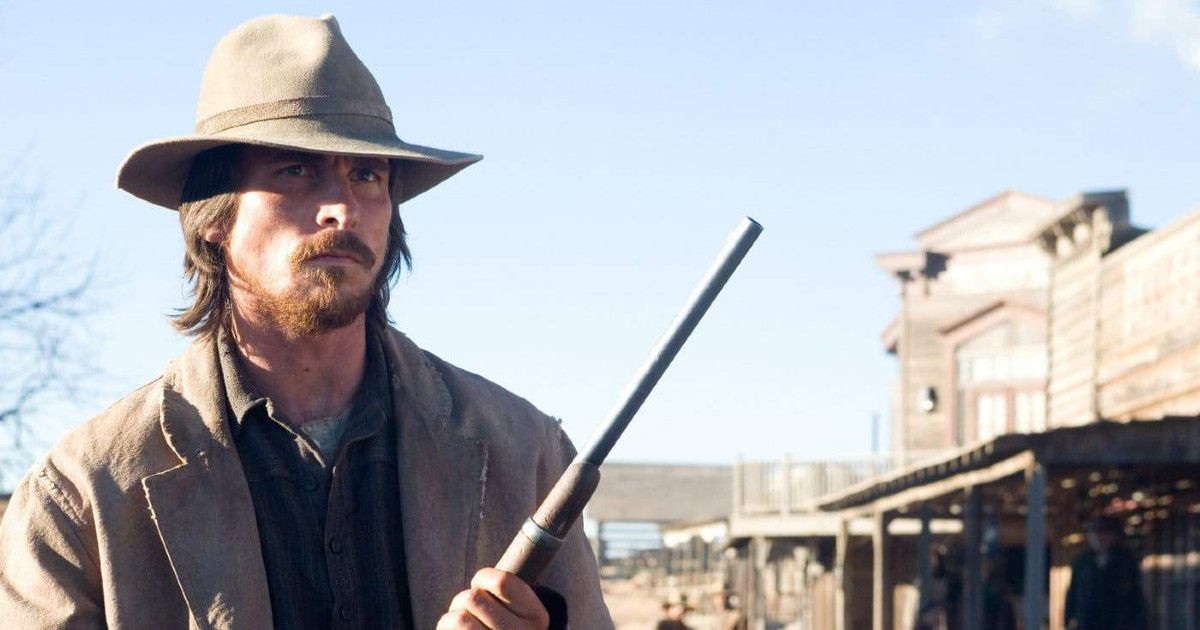
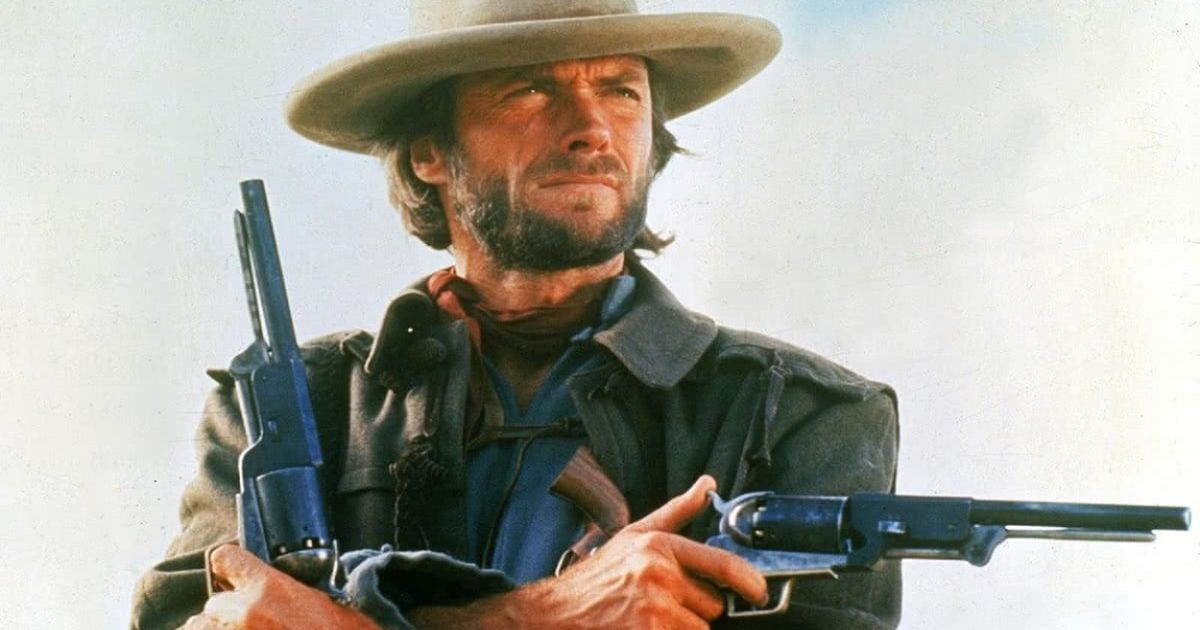
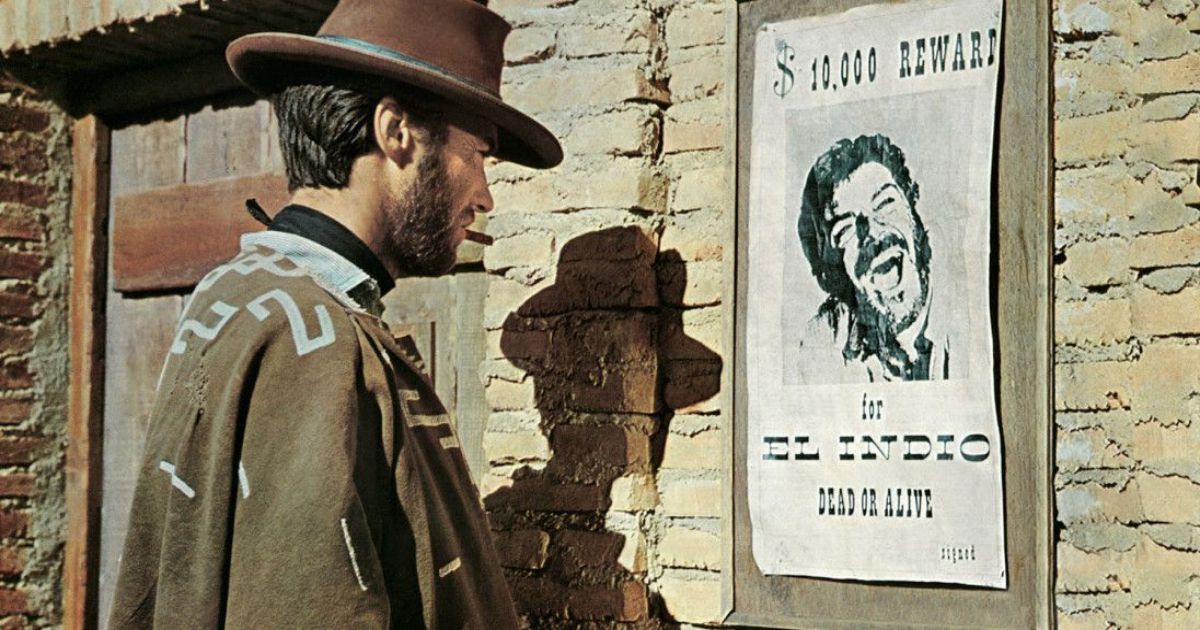
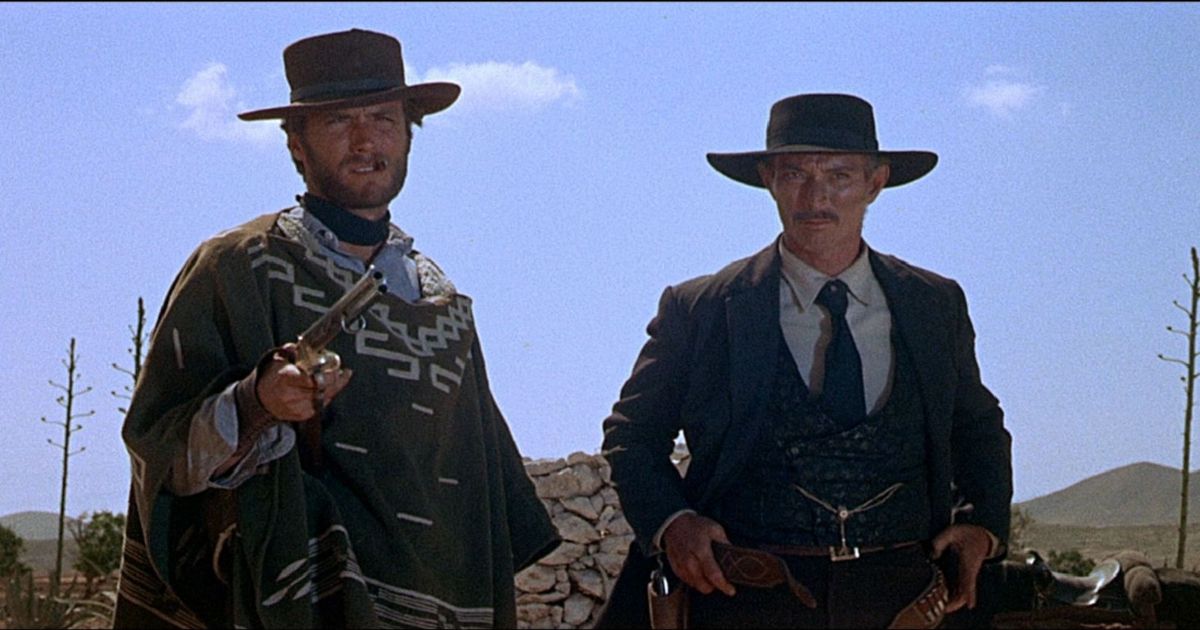
.jpg)

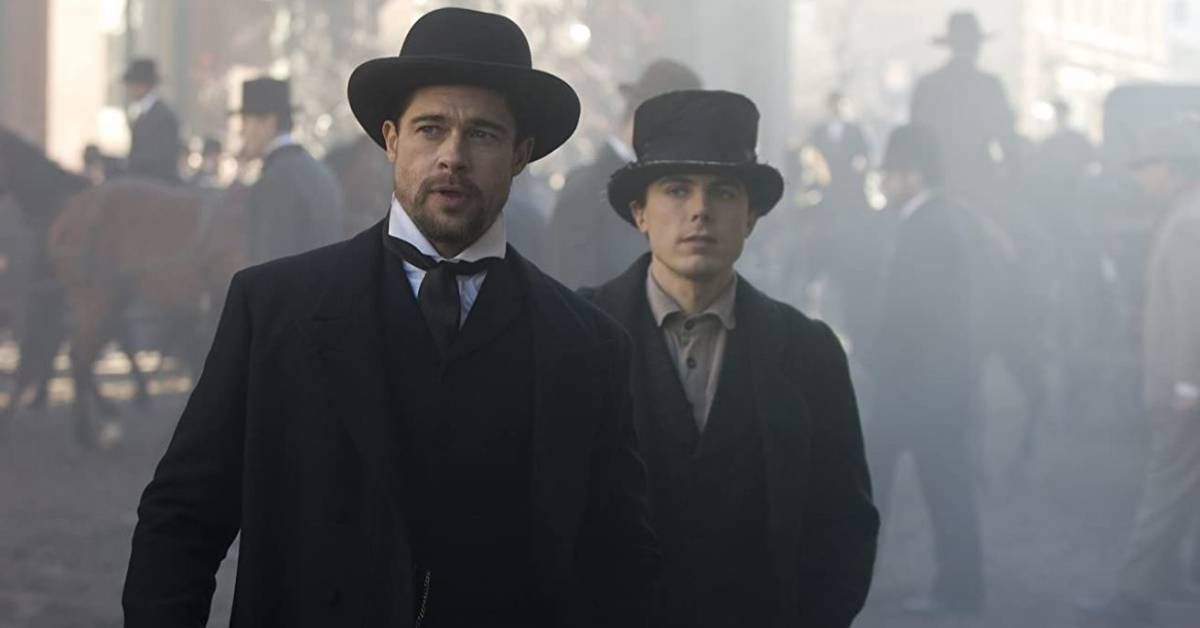
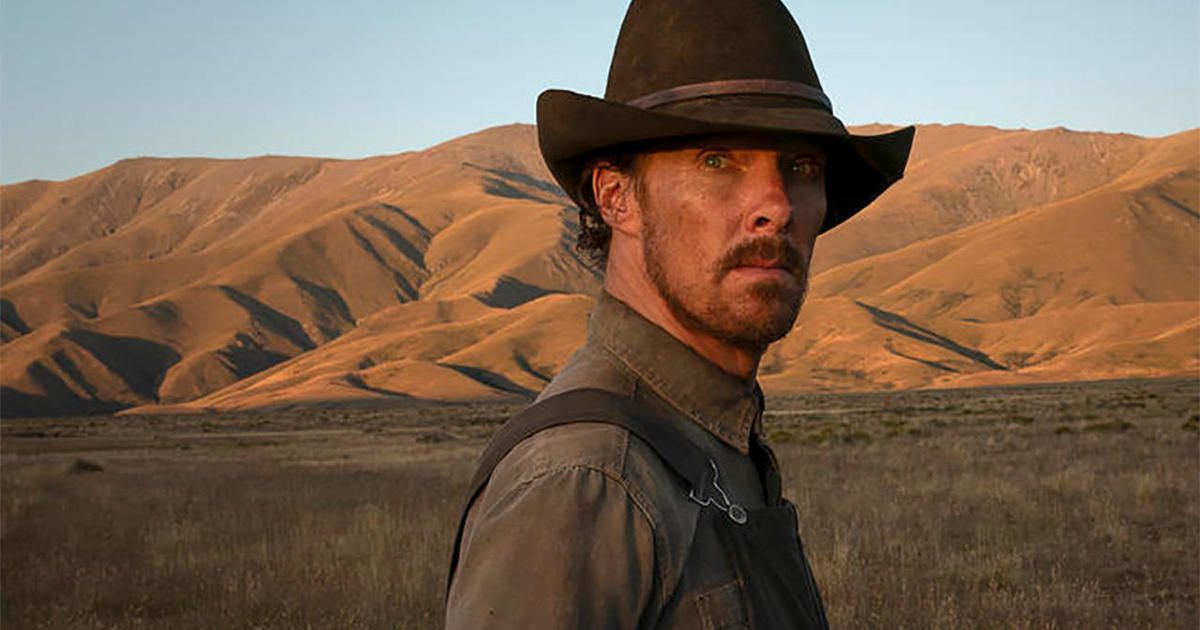

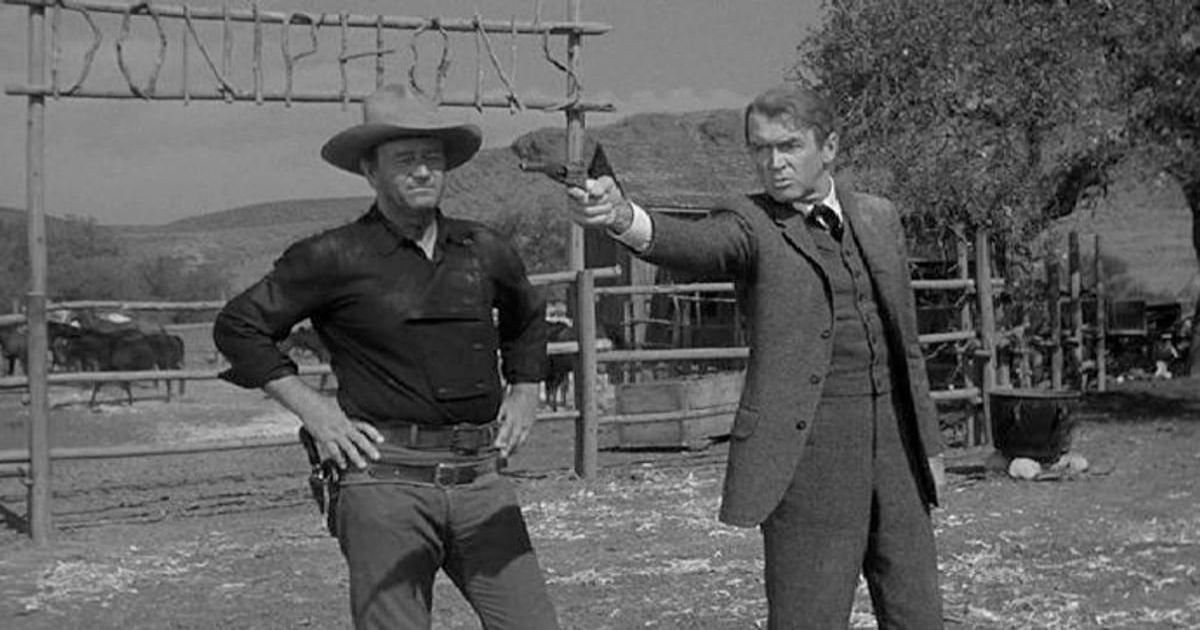
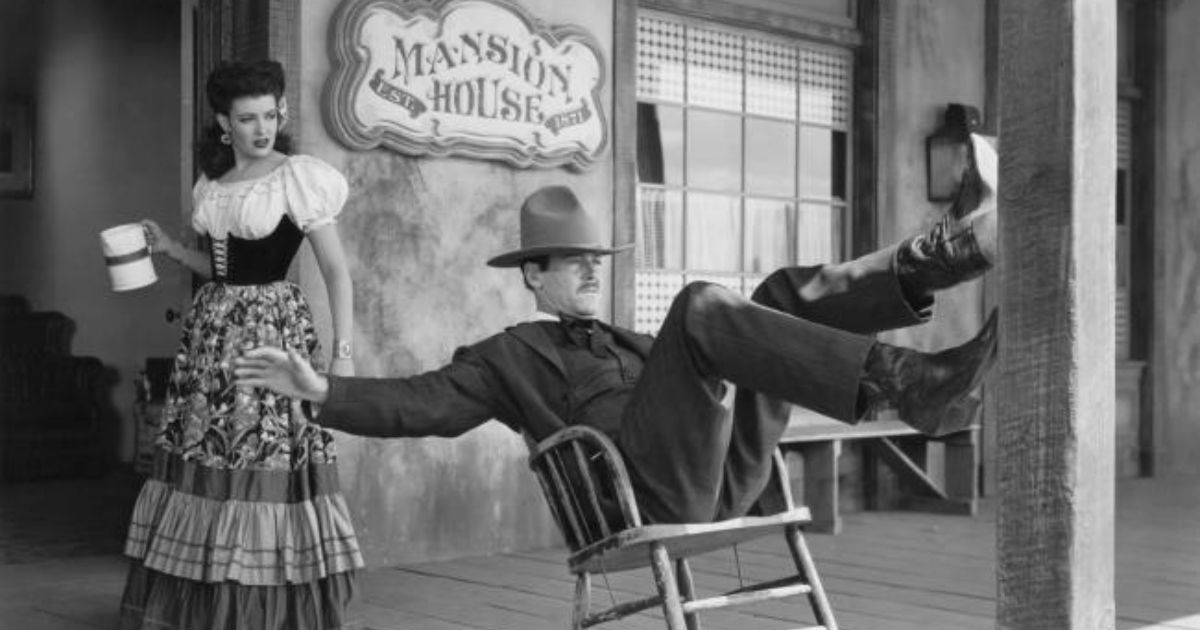
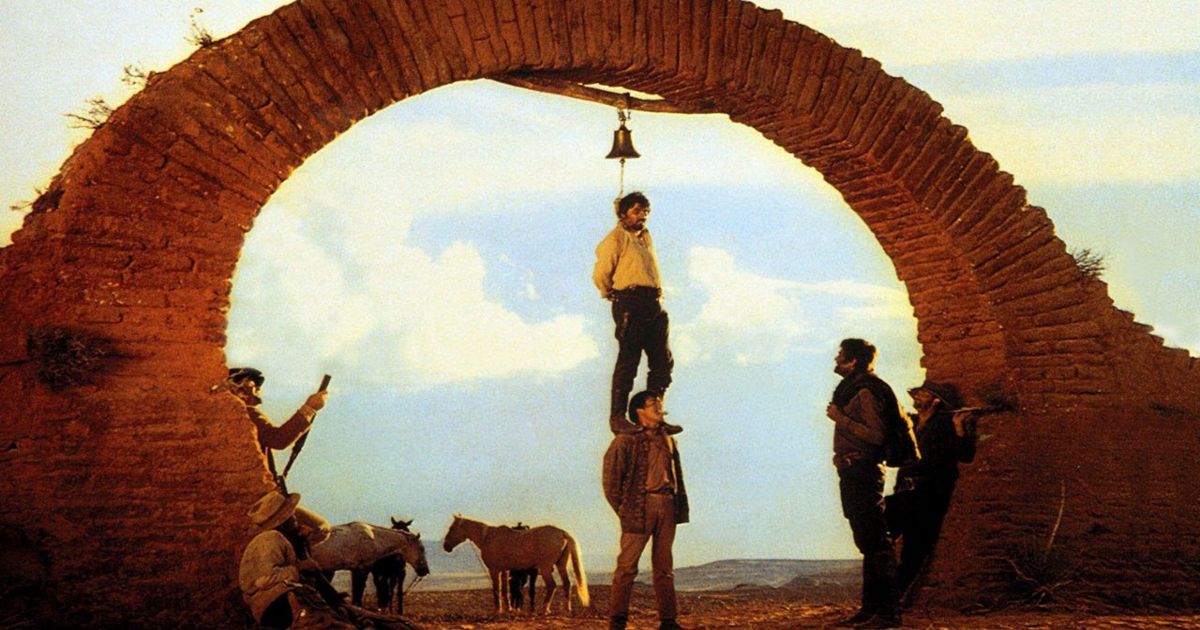
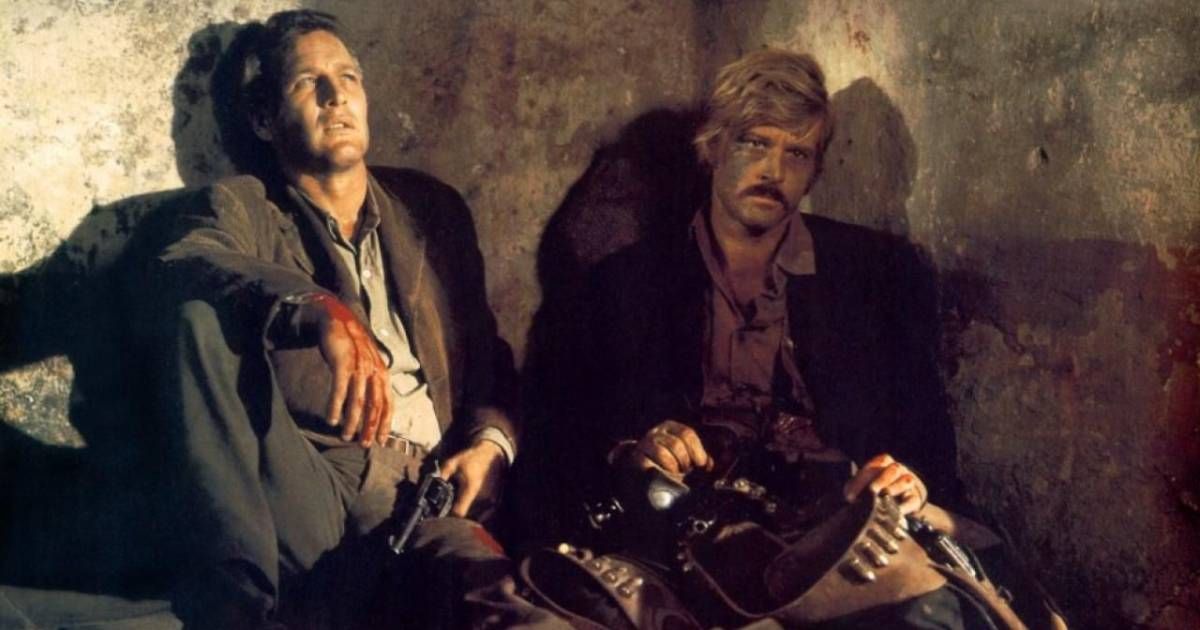
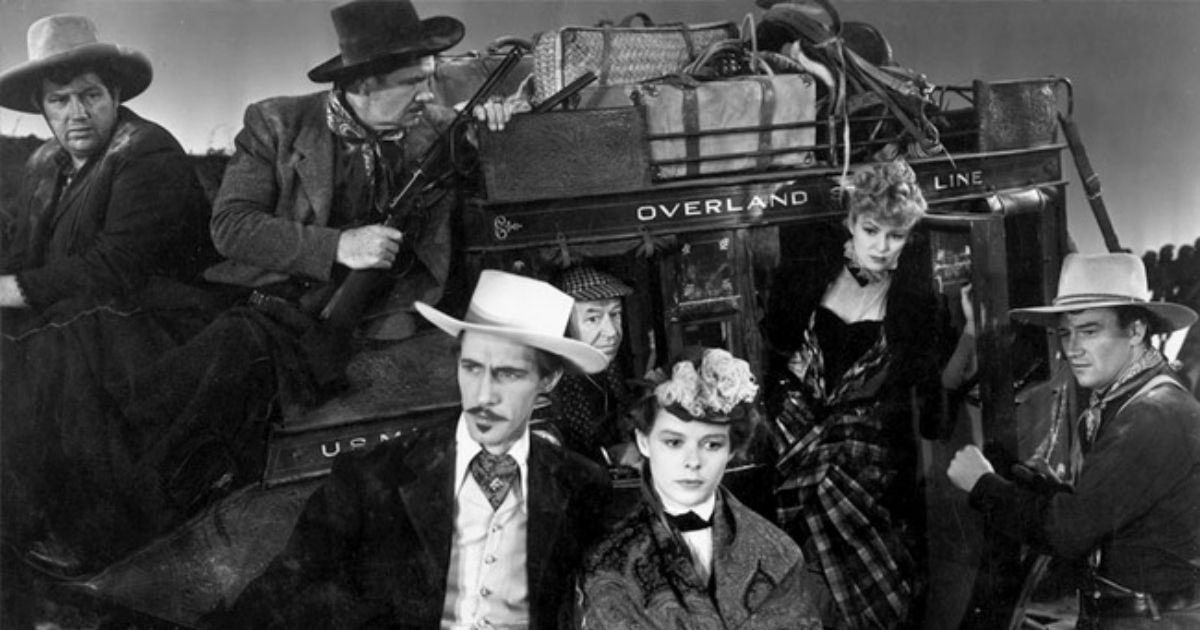

.jpg)

